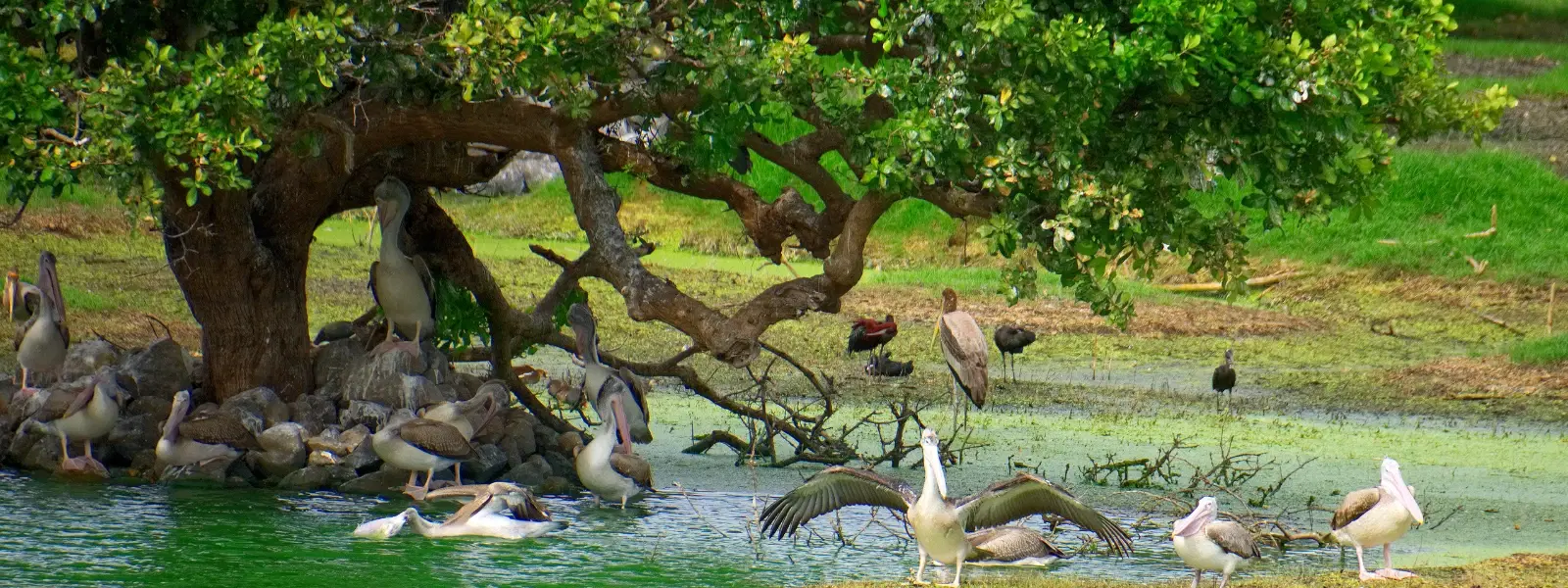
Hotels
•04 min read

India boasts an incredible tapestry of avian biodiversity, with over 1,300 bird species fluttering across its varied landscapes. Bird sanctuaries in India serve as vital havens that not only protect endangered and migratory birds but also nurture a rich eco-tourism culture that inspires wanderers, planners, professionals, and luxury seekers alike. This blog unravels expert insights into these sanctuaries, offering essential tips for bird watchers and photographers while celebrating India’s unique natural heritage.
Bird sanctuaries are protected areas dedicated to the preservation of avian species. These special reserves provide safe havens for birds, especially migratory and endangered species, ensuring they have ample space to feed, breed, and rest. In India, these sanctuaries are a critical component of the wildlife conservation framework, serving as protected areas for birds and important bird conservation zones that maintain the balance within avian habitats in India.
India’s vast landscapes reveal a colorful mosaic of bird species. From the mesmerizing migratory birds in India that traverse continents to the indigenous species that have evolved uniquely in different regions, the country is a magnet for ornithologists and avid bird watchers. The thriving Indian bird reserves accentuate the splendor of both migratory birds in India and local feathered gems.
Among the most celebrated bird sanctuaries in India, the Bharatpur Bird Sanctuary (Keoladeo National Park) shines as a premier bird watching destination. Other notable locations include Chilka Lake Bird Sanctuary, known for its vibrant flocks of migratory birds, and Ranganathittu Bird Sanctuary, a hotspot for rare avian species. Each of these sanctuaries is not only renowned for its populous bird life but also for the unique natural settings that make them some of the famous bird sanctuaries and nature reserves for birds in the country.
India’s diverse regions each contribute uniquely to bird conservation. In Rajasthan, expansive deserts and wetlands create a perfect backdrop for numerous sanctuaries. In Kerala, lush greenery and waterways attract a variety of bird species. Gujarat and Tamil Nadu also boast several sanctuaries that offer serene retreats where nature lovers can immerse themselves in the vibrant chorus of bird calls. For travelers, a detailed bird sanctuary in India map can greatly assist in planning visits state wise.

For an unforgettable bird watching experience, timing and the right gear are key. Early mornings and late afternoons are ideal as these periods coincide with the activity peaks of many species. Always carry a pair of binoculars, not a heavy camera initially, and wear neutral clothing to blend into the surroundings. Adhering to ethical guidelines ensures that you respect these bird watching destinations and allow birds to flourish in their natural avian habitats in India.
If bird photography is your passion, consider the setting and movement of your subject. Use a camera with a fast shutter speed to capture birds in motion, and experiment with different angles to highlight the beauty of these creatures. Many sanctuaries double as amazing bird photography spots, where every flutter of wings can be a masterpiece in the making.
Bird sanctuaries play an essential role in preserving the ecological balance. They support not only the survival of endangered species but also protect vast ecosystems. These areas act as key protected areas for birds and are vital to ensuring the longevity of India’s rich biodiversity.
Despite their importance, sanctuaries face several challenges. Habitat destruction, climate change, and pollution are persistent threats that endanger these precious resources. However, numerous conservation initiatives have shown promise in mitigating such challenges, highlighting success stories where communities and authorities have come together to preserve these natural wonders.
Insight Corner: "Did You Know? India is home to over 1,300 bird species, making it one of the most biodiverse countries for avian life. Sanctuaries like Bharatpur and Chilka Lake play a crucial role in protecting migratory birds traveling thousands of kilometers annually."
Choosing the right bird sanctuary depends on your interests. If you are excited by the prospect of spotting migratory birds or rare species, research each sanctuary’s specialties before planning your journey. Whether your focus is bird watching or photography, selecting a destination that offers a variety of bird species ensures a fulfilling experience at these bird watching destinations and nature reserves for birds.

When preparing to visit a bird sanctuary, make sure to arrange any necessary permits in advance. Look for nearby accommodation options that are eco-friendly and conducive to nature exploration. Always plan your travel to minimize your ecological footprint, supporting sustainable tourism practices while navigating using a bird sanctuary in India map to guide your route.
India has over 70 officially recognized bird sanctuaries spread across various states.
The Bharatpur Bird Sanctuary (Keoladeo National Park) in Rajasthan is widely regarded as the most famous bird sanctuary in India.
Tamil Nadu boasts the highest number of bird sanctuaries in India, with several dedicated zones for bird conservation.
The winter months (October to February) are ideal for bird watching, as migratory birds flock to India during this period.
Yes, but the experience varies with the season. Winter is best for migratory birds, while resident species are more visible during summer.
India’s bird sanctuaries stand as living testaments to the nation’s commitment to conservation, biodiversity, and eco-tourism. These refuges, from the vibrant migratory hotspots to regions showcasing unique local species, offer unmatched experiences for bird watchers, photographers, and nature enthusiasts. By venturing into these natural havens, readers not only enhance their connection with India’s wildlife but also contribute to preserving these vital pieces of our ecological heritage.